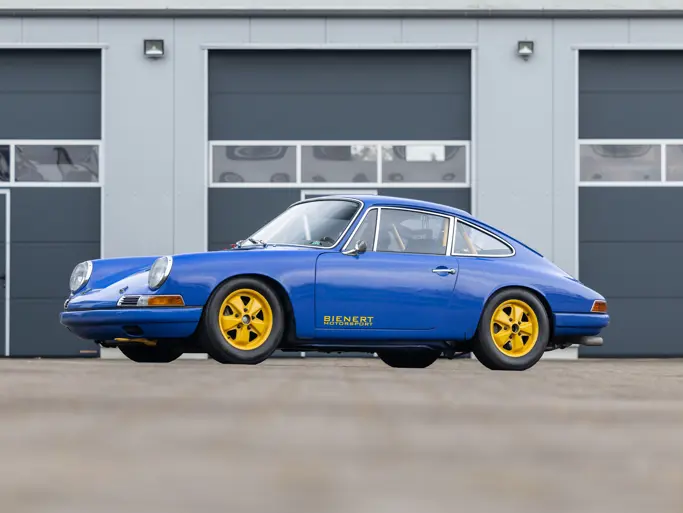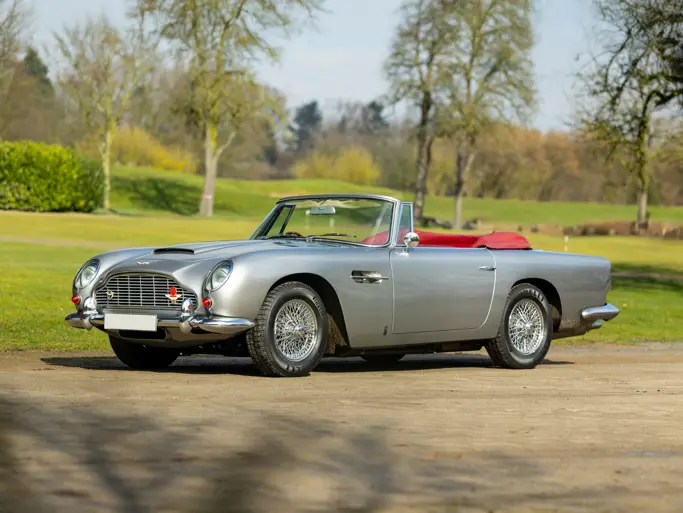 | Fort Lauderdale, Florida
| Fort Lauderdale, Florida

1973 DeTomaso Pantera L
{{lr.item.text}}
$52,000 USD | Sold
{{bidding.lot.reserveStatusFormatted}}
- 351-cid "Cleveland" V-8
- ZF five-speed manual gearbox
- Reported as "original"
- Internal & inconspicuous performance upgrades
- Original manuals
- Air conditioning
- Approximately 1,630 1973 "L" models built
- "An exciting, unrefined beast"
The 1973 DeTomaso Pantera was found to particularly interesting to the Road & Track road test crew when they tested the car for their May 1973 issue. It was considered to be the first “exoticar” to appear on these shores with the fully law-conforming 1973-spec crash bumpers. Both the front and rear bumpers were engineered with hydraulic cylinders and are of metal construction with rubber cladding. They added about 50 pounds to the overall weight and nearly 9-inches in length. Designed by American Tom Tjaarda, who worked for DeTomaso’s Ghia bodyworks in Italy, this solution was widely applauded as an excellent solution to the U.S. governments increasing demands upon the auto industry.
Born in Argentina, Alejandro DeTomaso was a successful racing driver who proved to be an even more successful constructor, first with his own chassis powered by engines from the Maserati brothers’ OSCA concern, and later with Ford-based production engines. The Vallelunga, introduced at the Turin show in 1963, used a 1.5-liter Cortina engine in a mid-engine roadster chassis. The Mangusta, executed by Ghia on a design by Giorgetto Giugiaro, followed in 1969; it was a dramatically sculpted shape, powered by a 302 cubic inch Boss Mustang engine. Essentially a prototype racecar with street pretensions, some 400 examples of the Mangusta were built.
In 1970, Ford Motor Company recognized De Tomaso as an opportunity to build upon its international endurance racing successes of the 1960s. The Pantera, which succeeded the Mangusta, was designed by Tom Tjaarda. Built by Ghia, powered by a mid-mounted 351 cubic inch “Cleveland” V-8 engine and mated to a gated ZF five-speed manual gearbox, the Pantera successfully translated the racing pedigree of the Mangusta into a steel-bodied supercar with reasonable luggage space and the amenities that American buyers expected. The Pantera was introduced at the New York Auto Show in 1970, and was sold by select Lincoln-Mercury dealers from 1971 to 1974. Performance was most impressive with 0- to-60-mph times of 5.5 seconds and a top speed of 150 miles per hour.
The De Tomaso Pantera offered here is reported to be in original condition and runs with its original drivetrain. The 351-cid V-8 has internal performance upgrades that are not visible, such as larger cam, carburetor, intake and ignition and keeps an all-stock appearance. From the associated serial numbers with the car and comparing them to available sources shows that this is one of the “L-spec” 1973 models. The L stands for “Lusso” or “Luxury” and was attributed to all 1973 Panteras past number 4268. These same sources show that there were approximately 1,630 1973 DeTomaso Pantera L models produced.
The cars produced with the “Luxury” treatment included black safety bumpers front and rear, improved cooling and air conditioning systems, and a revised dashboard layout, re-contoured seats, among other enhancements. Especially interesting was that to achieve a better compromise in handling qualities, DeTomaso had Goodyear design a special 60-series bias-ply tire that would allow the car to maximize its individual and inherent handling characteristics. Michelin and Pirelli had radials for the platform and were still available by order.
Retaining a wonderful patina of originality this red with black interior example is striking visually and is highlighted with features such as air conditioning, factory alloy wheels, radio; power windows, steering and four-wheel disc brakes. The original manuals are also part of this package.
Road & Track found the Pantera to be “the same exciting, unrefined beast it’s always been. The big Ford V-8 in its latest low-compression form provides plenteous torque and good drivability” They concluded “just be glad Ford and DeTomaso had the courage and foresight to provide you with the Pantera.” This represents a wonderful opportunity to acquire a DeTomaso Pantera; it remains a remarkable icon of early seventies style and performance.




